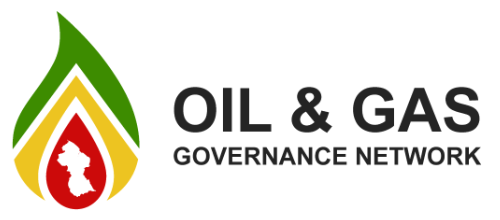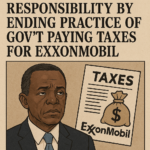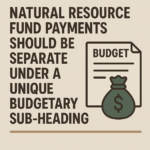The 38% tariff on Guyana’s exports to the United States is among the highest announced by President Donald Trump late last week. The number is half of the 76% that Trump’s economic advisers have calculated as the actual value of the tariff disparity between the USA and Guyana. However, what began as a comparison of tariff rates between the USA and individual countries soon evolved into something more complex – one that included non-tariff barriers, such as exchange rate manipulation, import controls, and phytosanitary measures. Finally, if anything can be called definitive under a mercurial and erratic figure like Trump, it is that the tariff was calculated based on US trade statistics.
The formula used is the higher of ten percent or the 2024 US trade deficit in goods with a given country, divided by the total value of US imports from that country. For example, if the US has a $100 million trade deficit and imports $250 million in goods, the resulting tariff is 40% which is higher than the default 10%. However, if the deficit is only $10 million, the percentage would be 4%, and the 10% minimum would be applicable. It is mind-boggling that the country with the world’s largest number of Nobel laureates in economics would rely on what is worse than voodoo economics.
The Economist, a highly respected weekly, described the move as “the most profound, harmful, and unnecessary economic error in the modern era.” Others have been more cutting. The London Observer labeled the tariffs “fundamentally wrong, brutal, and paranoid,” while The Atlantic suggested that understanding them requires insight into Trump’s mind alone. Among the absurdities: the inclusion of the Heard and McDonald Islands – uninhabited volcanic outcrops mostly home to penguins and, in another case, a few U.S. military personnel.
Guyana compared
Guyana, like Trinidad and Suriname, is part of CARICOM’s Common External Tariff and VAT system. Yet while our neighbours face only a 10% tariff, Guyana’s is a staggering 38%. Why the disparity? The answer lies in how the U.S. counts oil.
Our largest export to the U.S. is crude oil, totaling several billion U.S. dollars. In 2023, ExxonMobil alone accounted for nearly US$5 billion. And yet Guyana neither owns nor controls this oil – it is extracted and exported by foreign companies under a contract that leaves us with little revenue and even less control. This is reminiscent of Vietnam, Cambodia, and Laos, which were encouraged by the U.S. to replace China as low-cost producers. So much for believing that America is ever a friend.
Stabroek News on Friday carried the government’s announcement that crude petroleum, gold, and aluminum are exempt from the Trump tariff. Unlike the government, I take no comfort in that unsourced information. These are not Guyanese exports in any meaningful sense. Our country does not export petroleum products to the U.S.; ExxonMobil and Hess do. The same applies to bauxite ore and gold. Unless the 38% is reduced to 10%, there is no benefit to our genuine local exporters – of seafood, rum, lumber, and other products.
Opportunity for renegotiation of the 2016
Petroleum Agreement
Guyana is not the villain here. We are the victim – first of a contract, then of a misrepresentation, and now of a penalty. We must assert our sovereignty, protect our economy, and demand accuracy and fairness. We have been and continue to be robbed, once by the 2016 PSA, then by the statistical misrepresentation of our exported products, and now, a third time, by a tariff rooted in that fiction.
If the last is rectified, our exporters will face a 10% tariff and struggle to remain competitive. At 38%, they’re either out of the U.S. market or out of business. In light of this fundamental shift, we should now assert our right to call for renegotiation – not just of the tariff, but of the petroleum agreement that underpins this entire distortion.
Renegotiate the tariff
International media have reported that more than fifty countries have requested meetings with the U.S. Admi-nistration to negotiate their assigned tariffs. Guyana must join that effort – perhaps through CARICOM – but with a competent team and accurate data. We must ensure that the value of oil exports by foreign companies is excluded from the balance of trade figures used by the USA to compute the tariff it will impose on Guyana.
Here’s the key distinction: Exemption refers to any product that escapes the tariff. The oil exported by Exxon and Hess is not Guyanese in any economic sense. Exclusion means not counting it in the equation since it inflates our true surplus and wrongly triggers penalties. What Guyana truly needs is exclusion, not exemption. Our politicians and negotiators must be clear and uncompromising in this matter. If they do not, we will be negotiating from a position of weakness.
The broader picture
Trump’s tariff policy reveals a deeper strategic miscalculation. The United States helped create and benefited most from the post-war global trade architecture, including the WTO, GATT, and Most Favoured Nation (MFN) treatment. That system fostered prosperity and stability. Now, Trump seeks to unravel it.
The signs are not good. Trump is doubling down, and reversing his executive order would deflate the tough-guy image he cultivates. We should expect inflation, a dip in oil prices, and a period of economic turbulence. Global trade infrastructure will need to be rethought – and re-fought.
Conclusion
Guyana must resist being cast as a trade surplus villain when, in truth, it is a victim of a flawed contract and misleading data. We must demand a new conversation – one grounded in economic reality and national dignity. This is a moment for clarity, courage, and collective action. “The question, then, is not whether we respond – but whether we are ready to do so with courage, clarity and competence.











